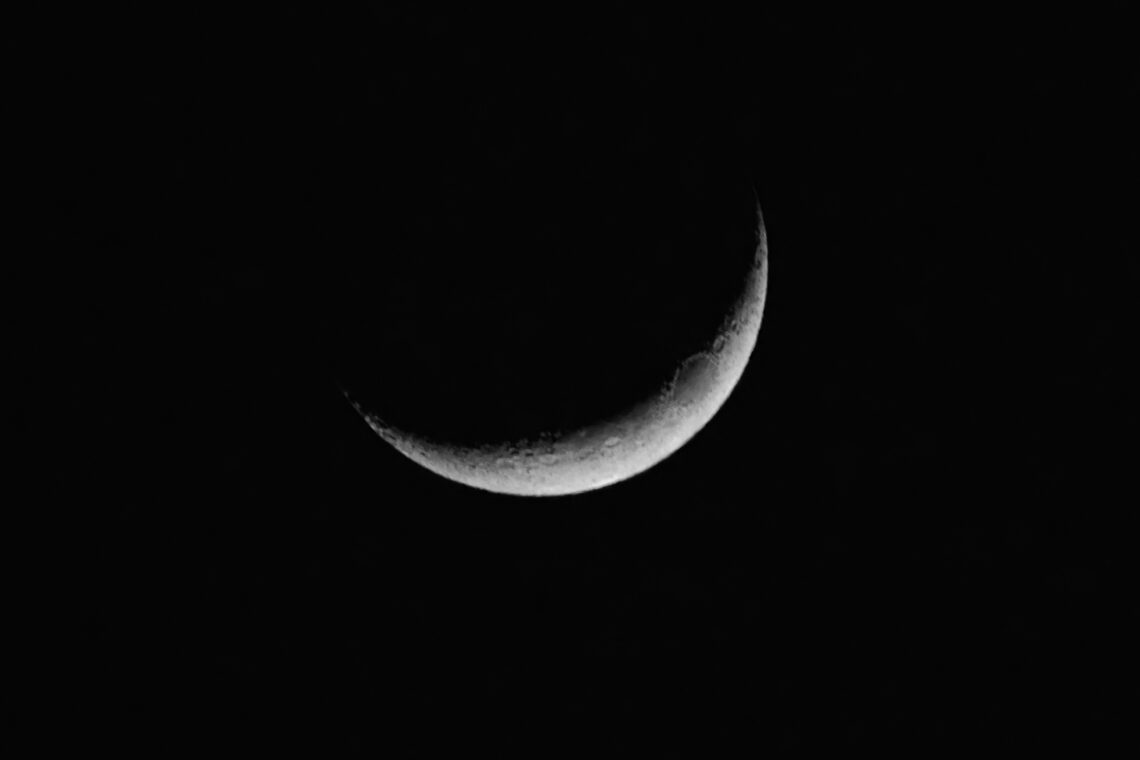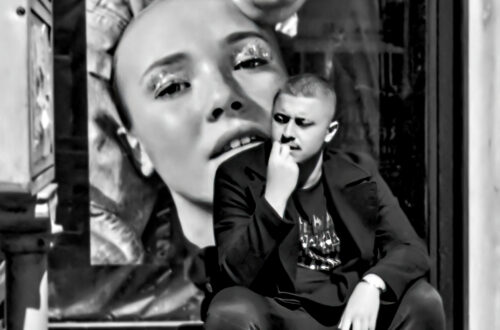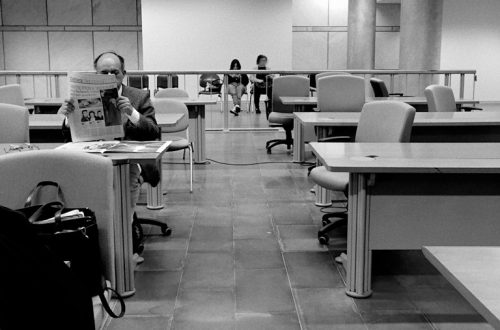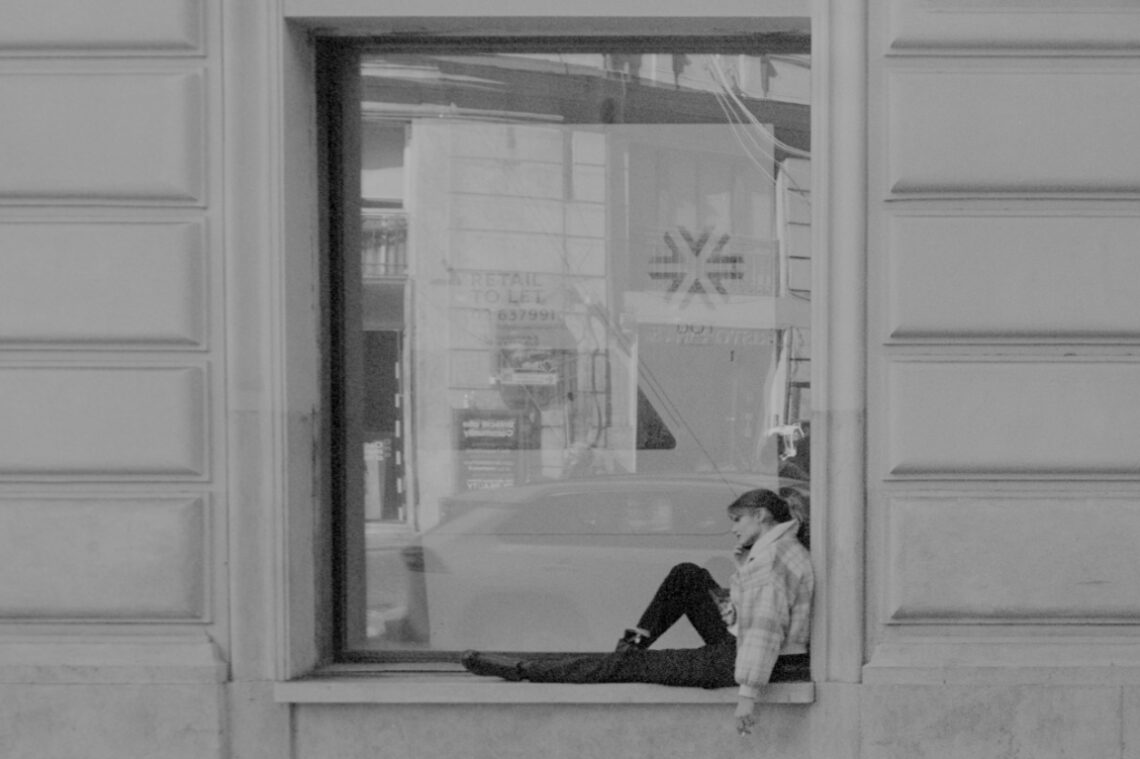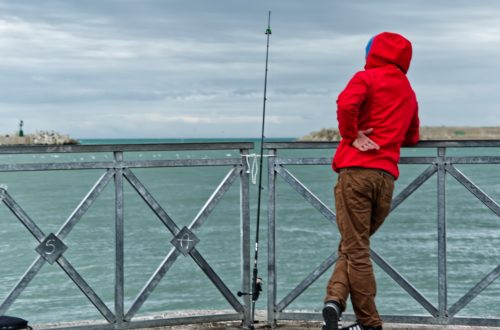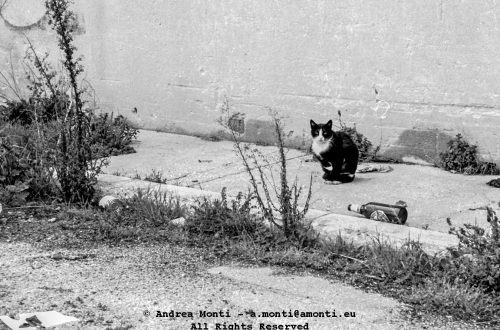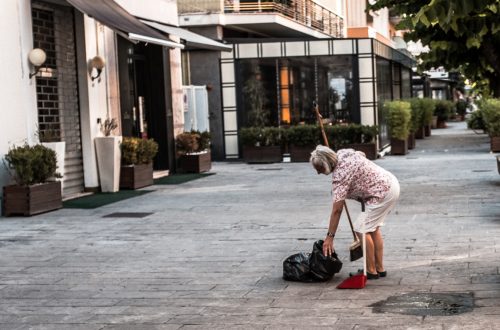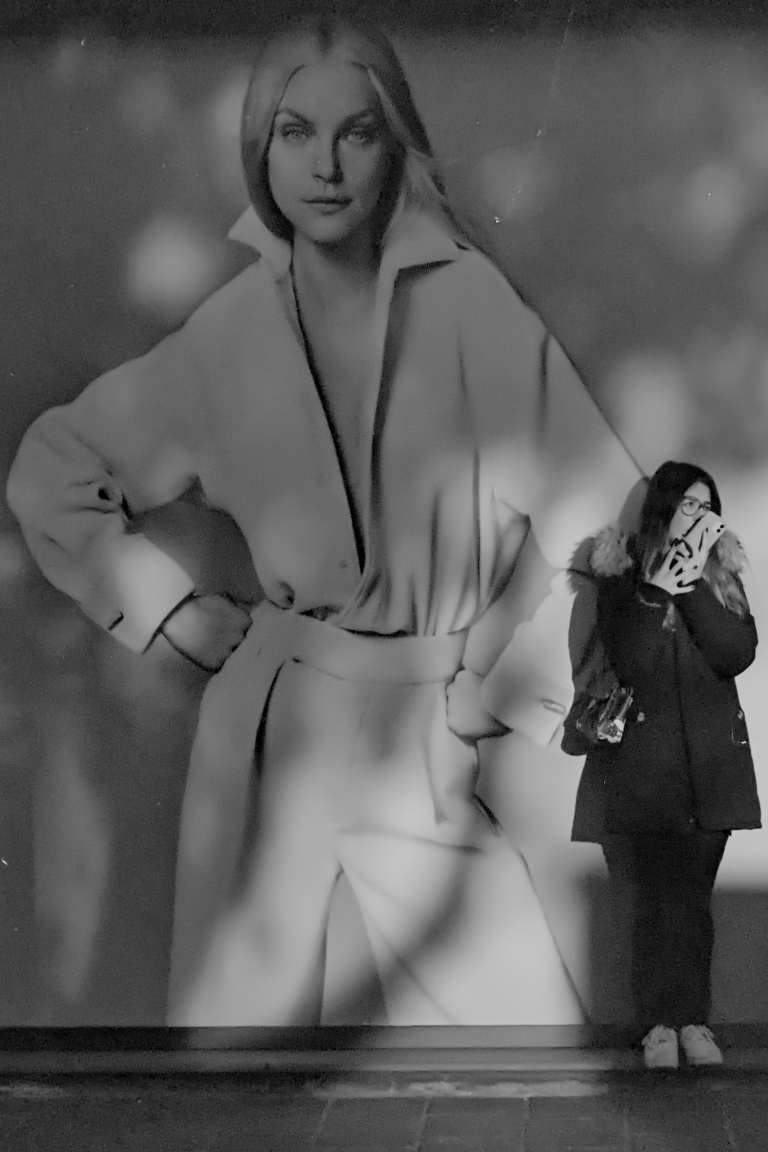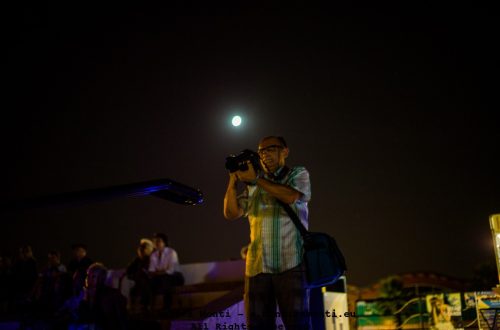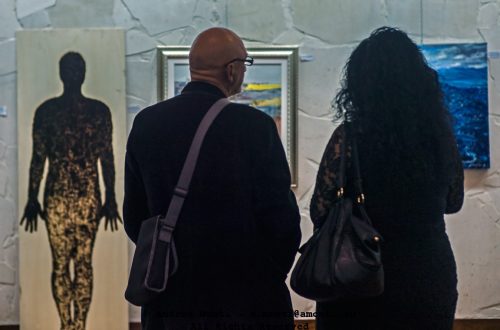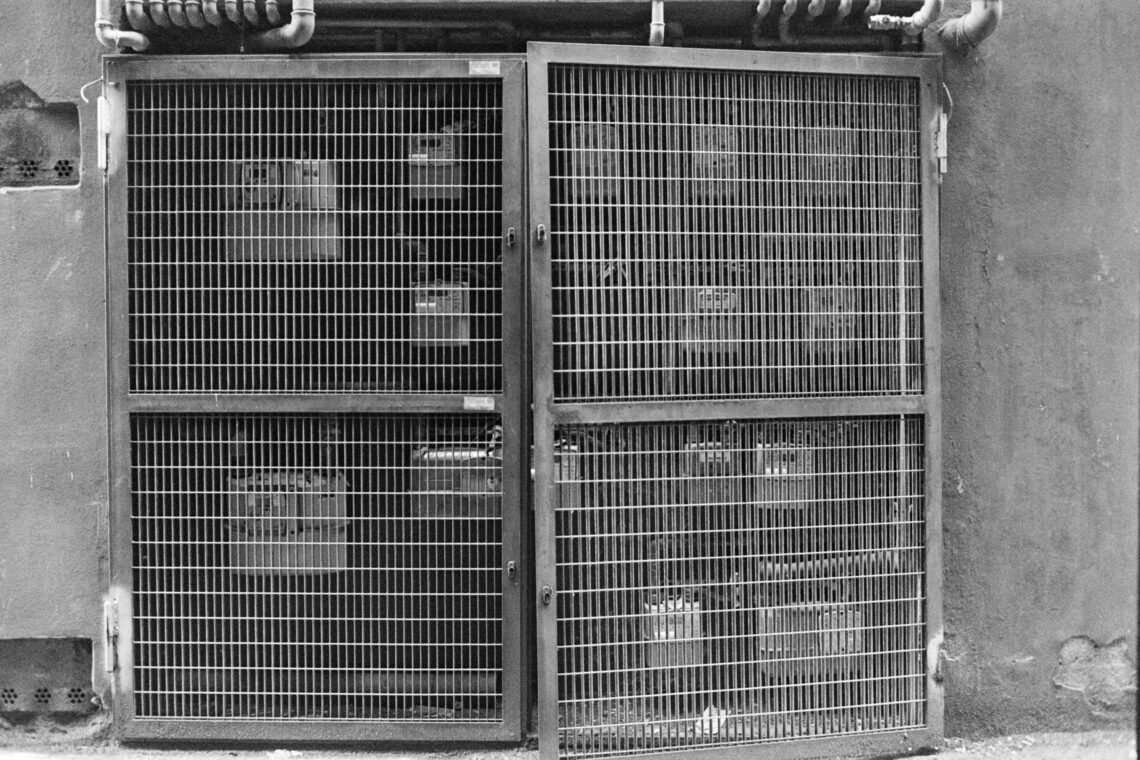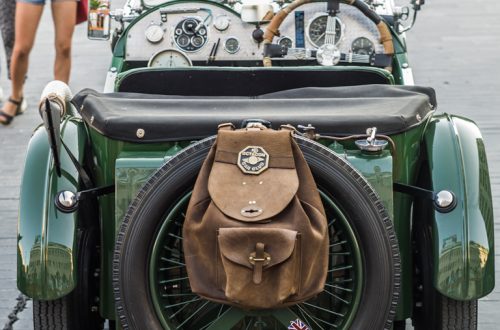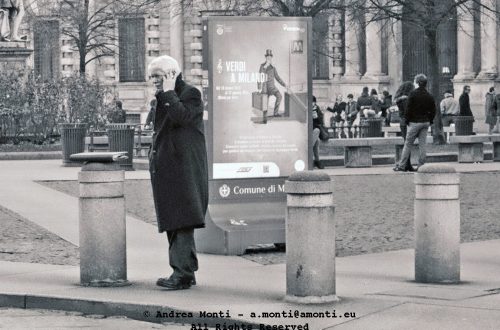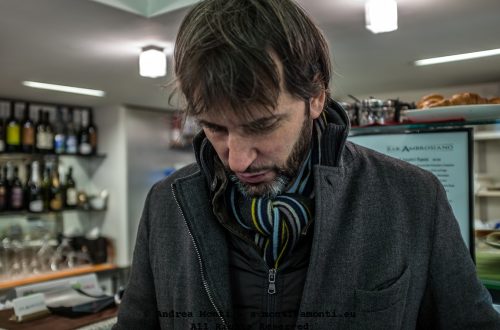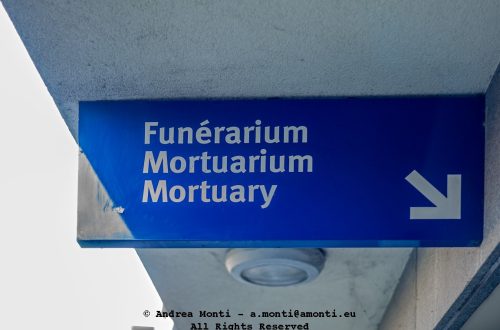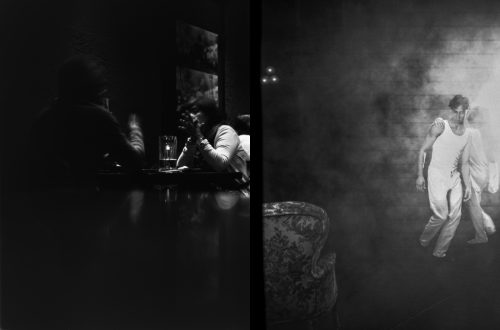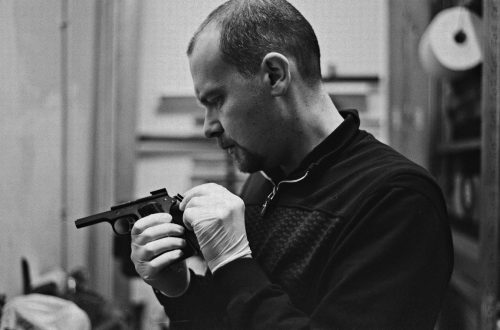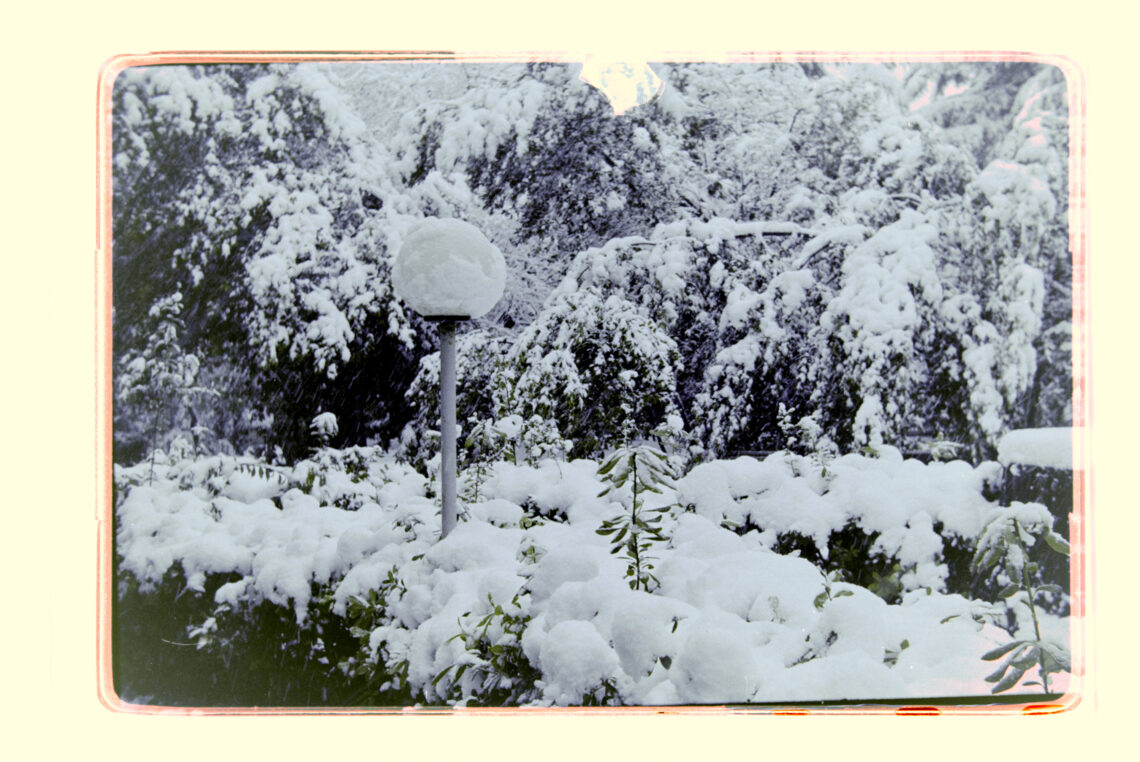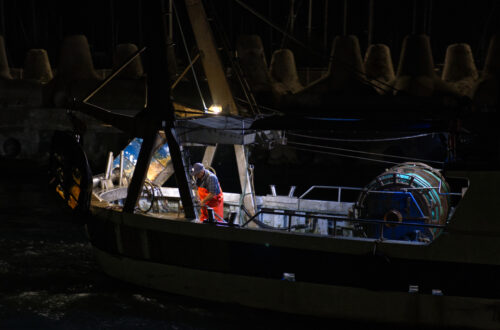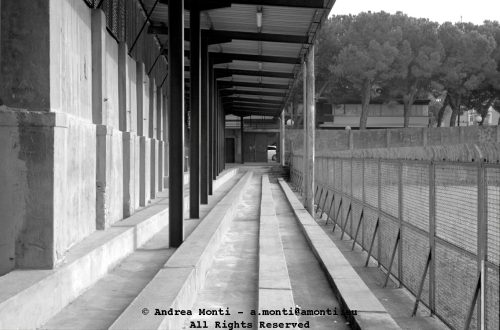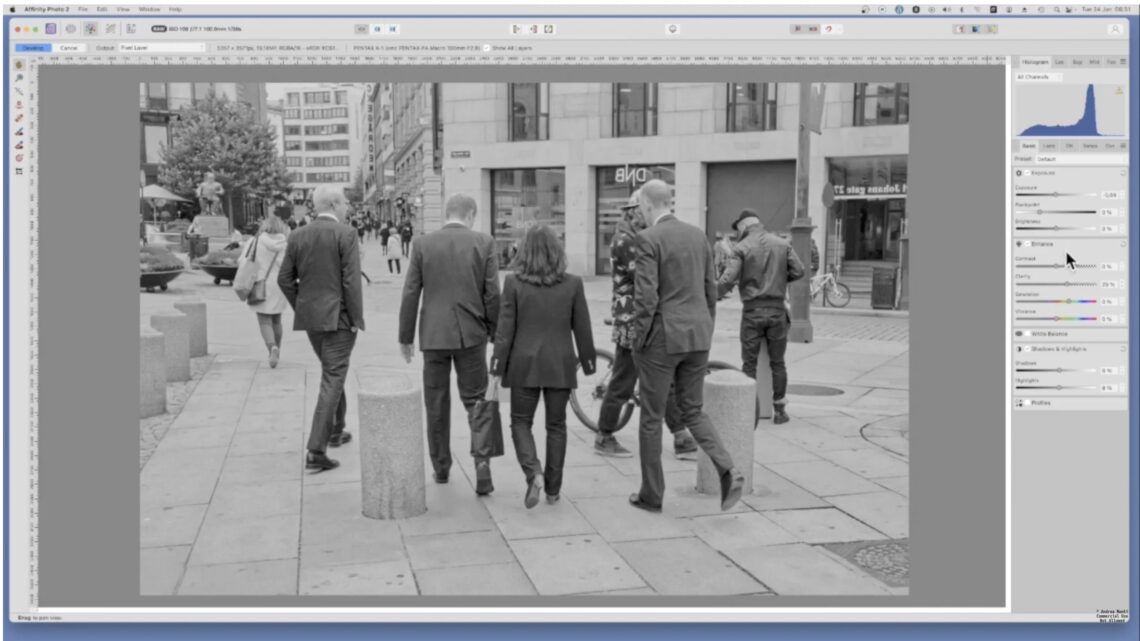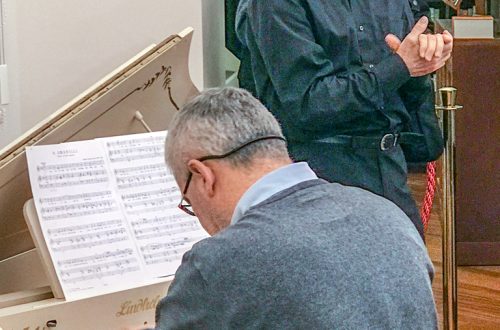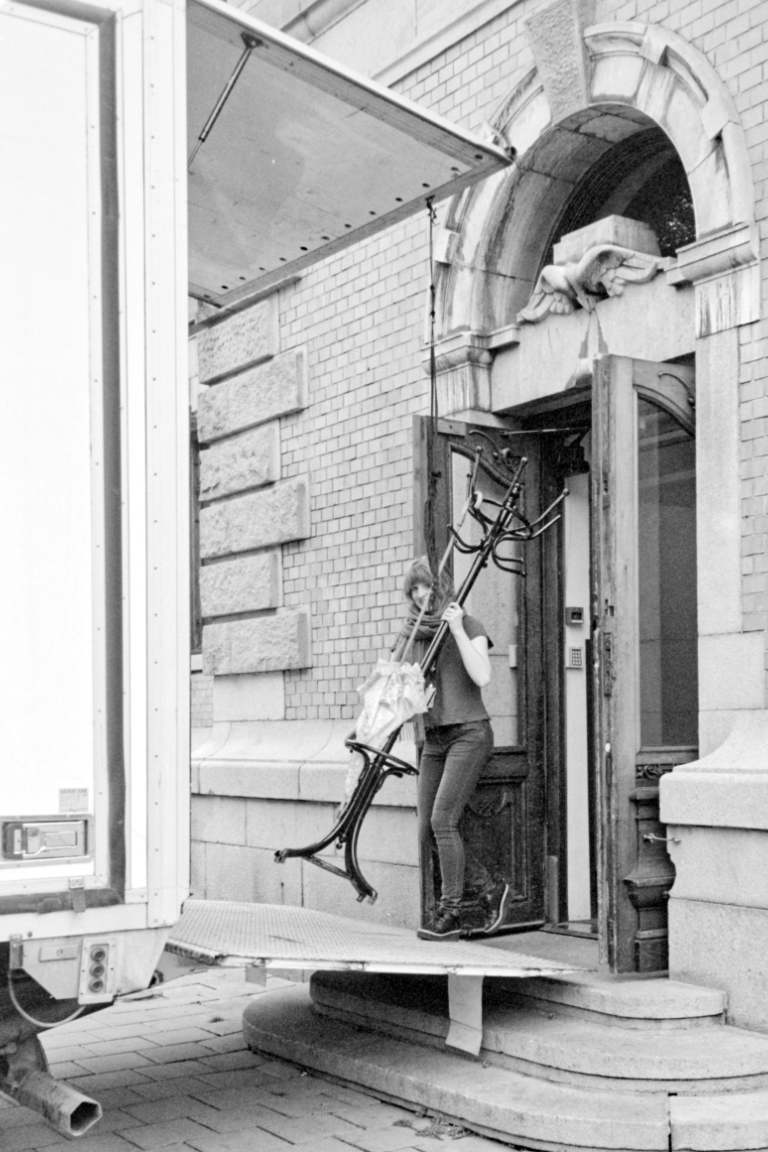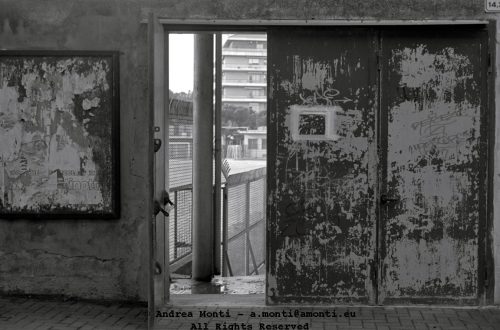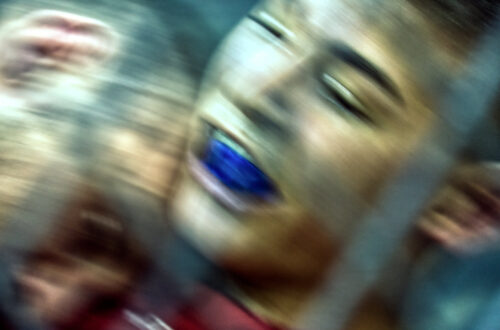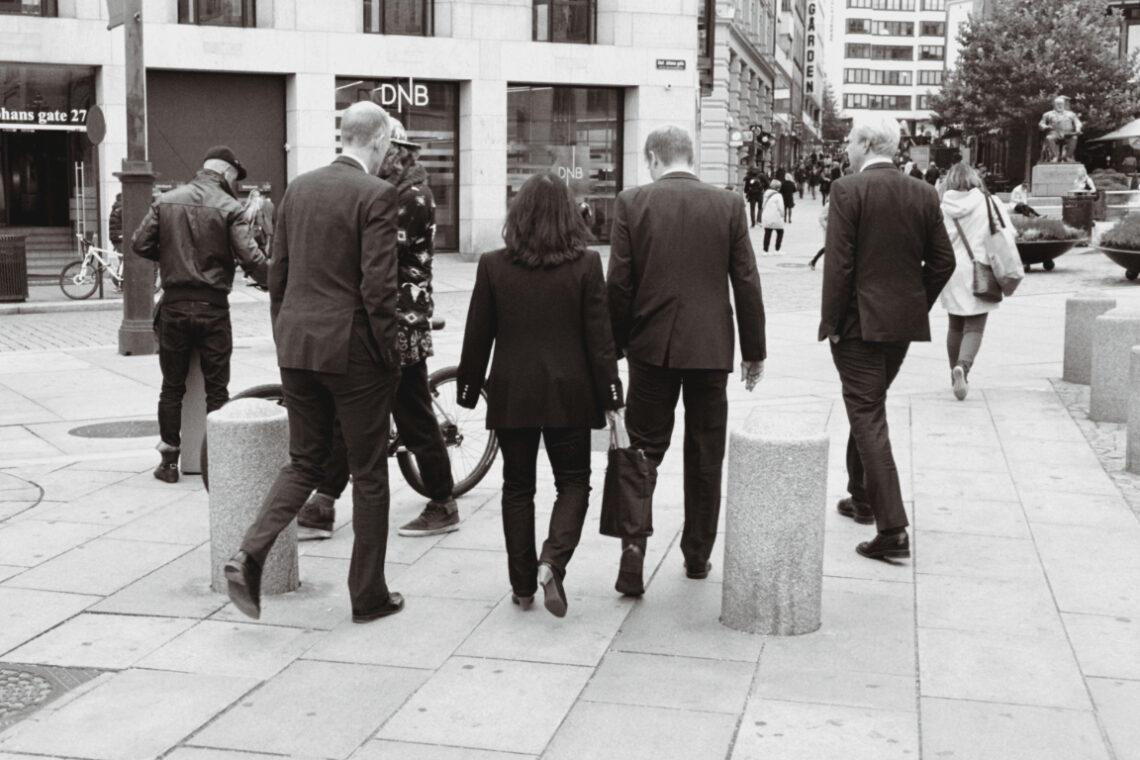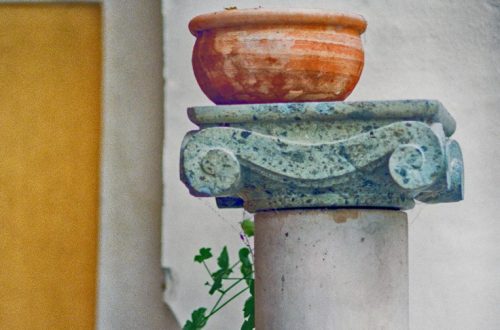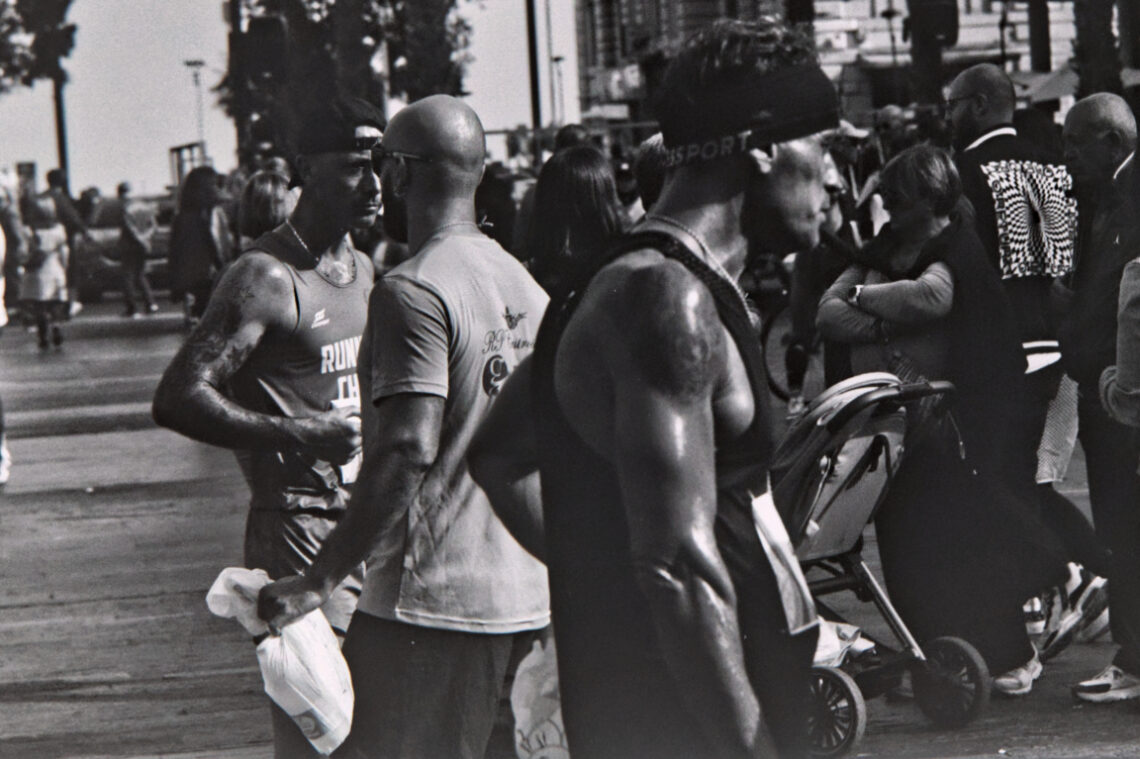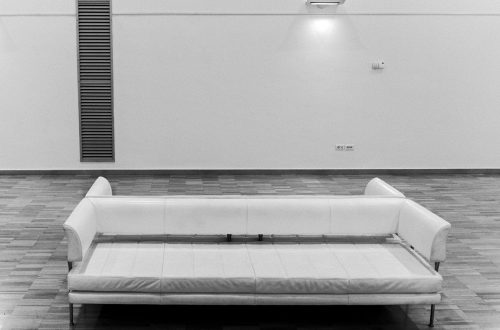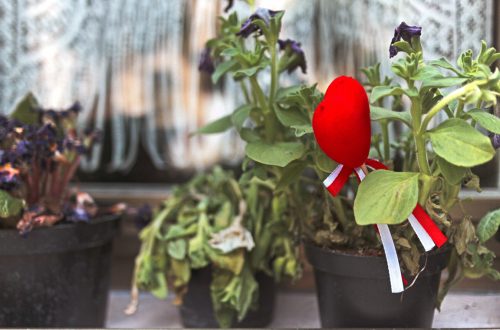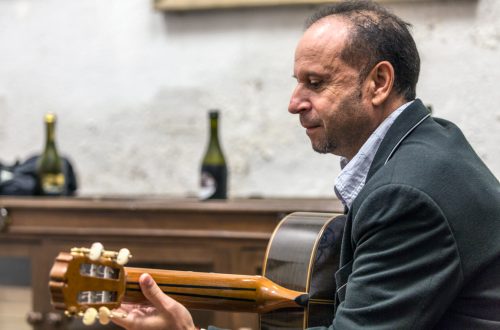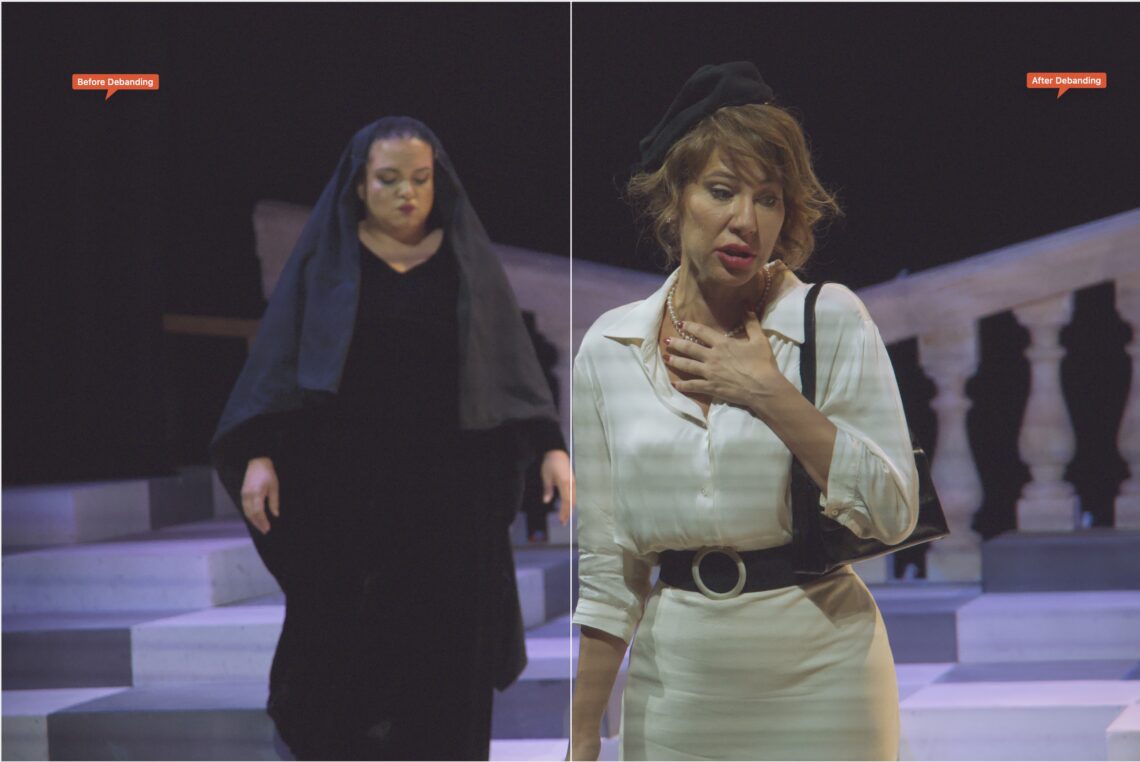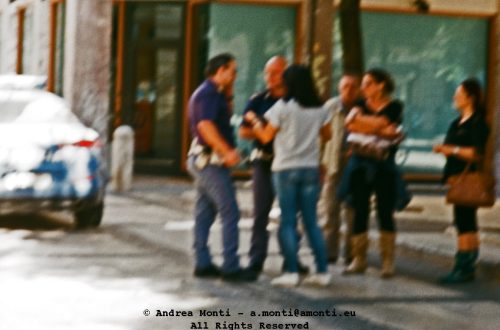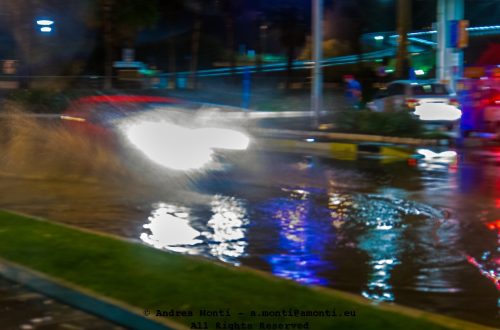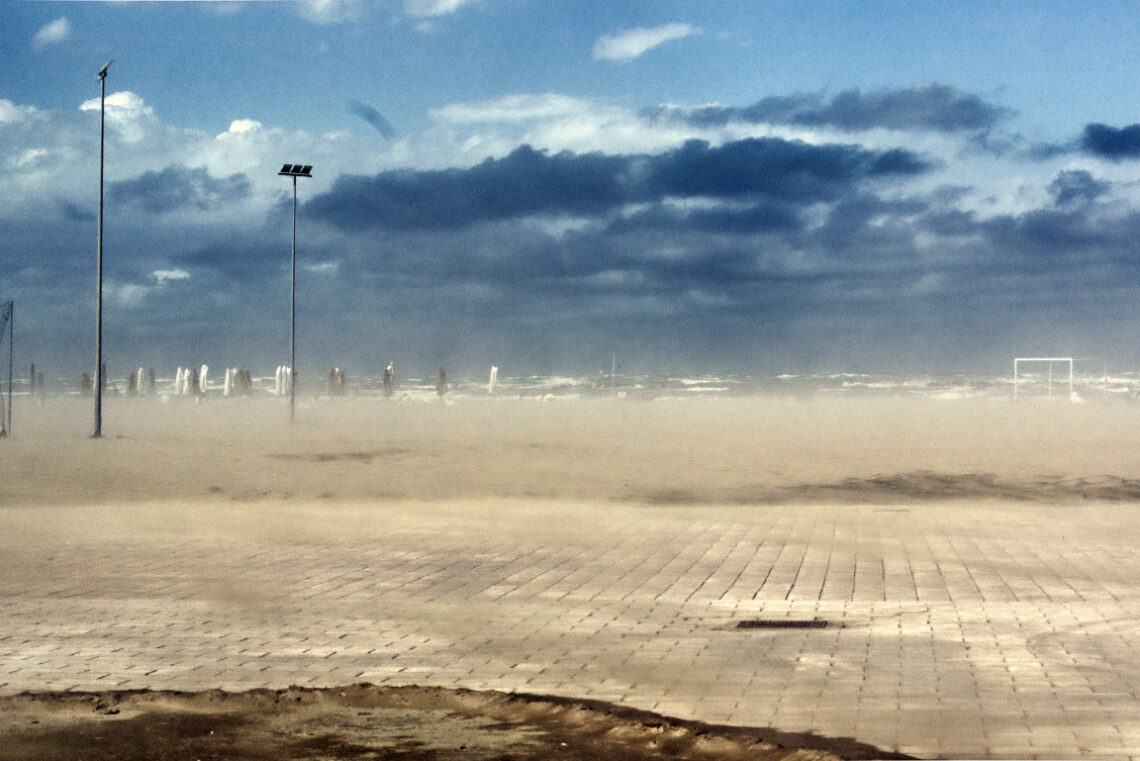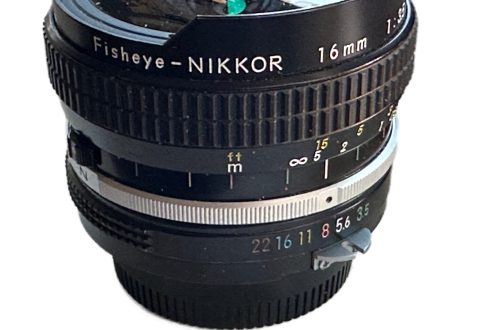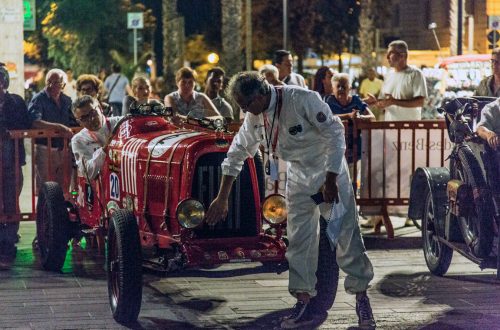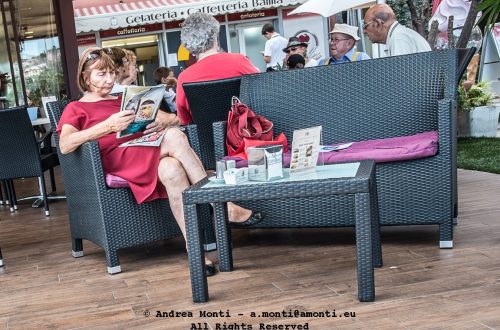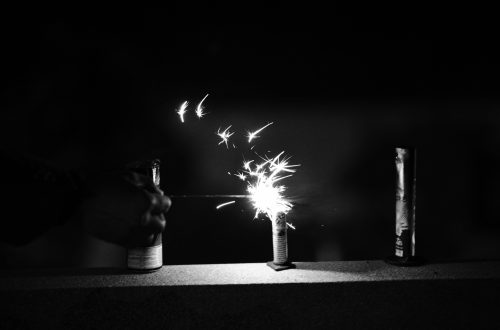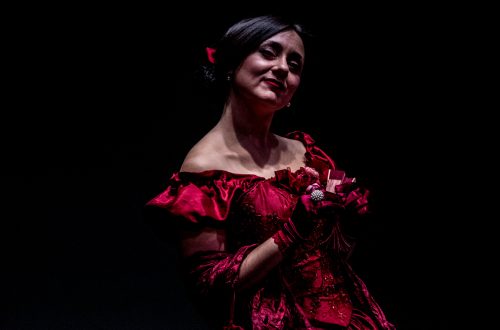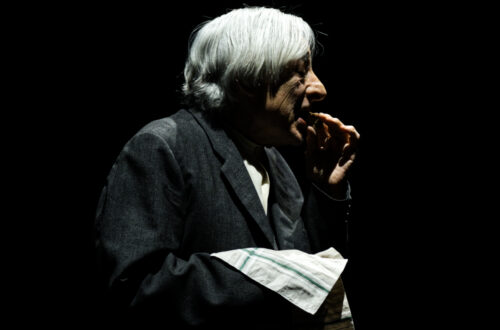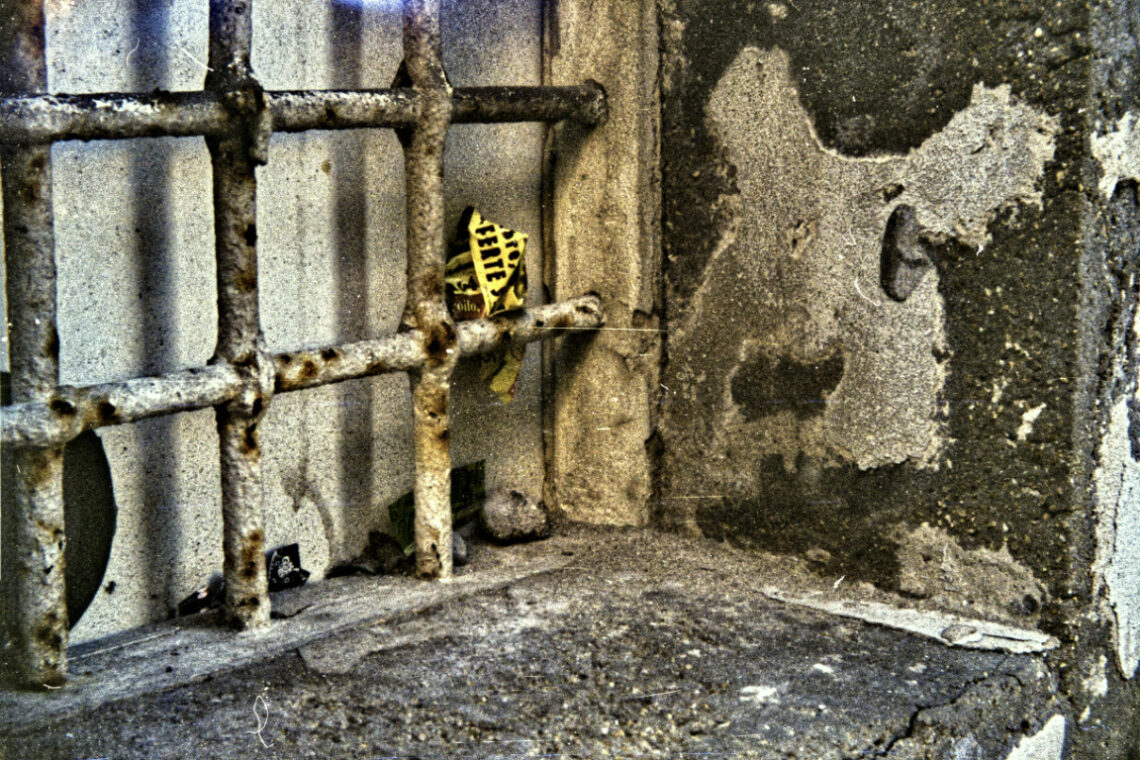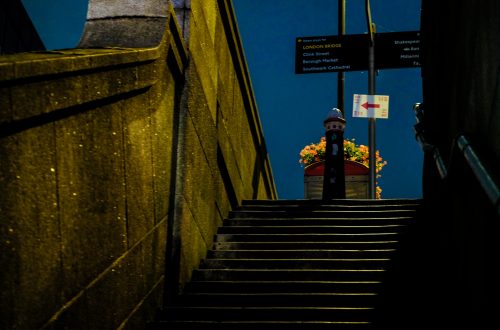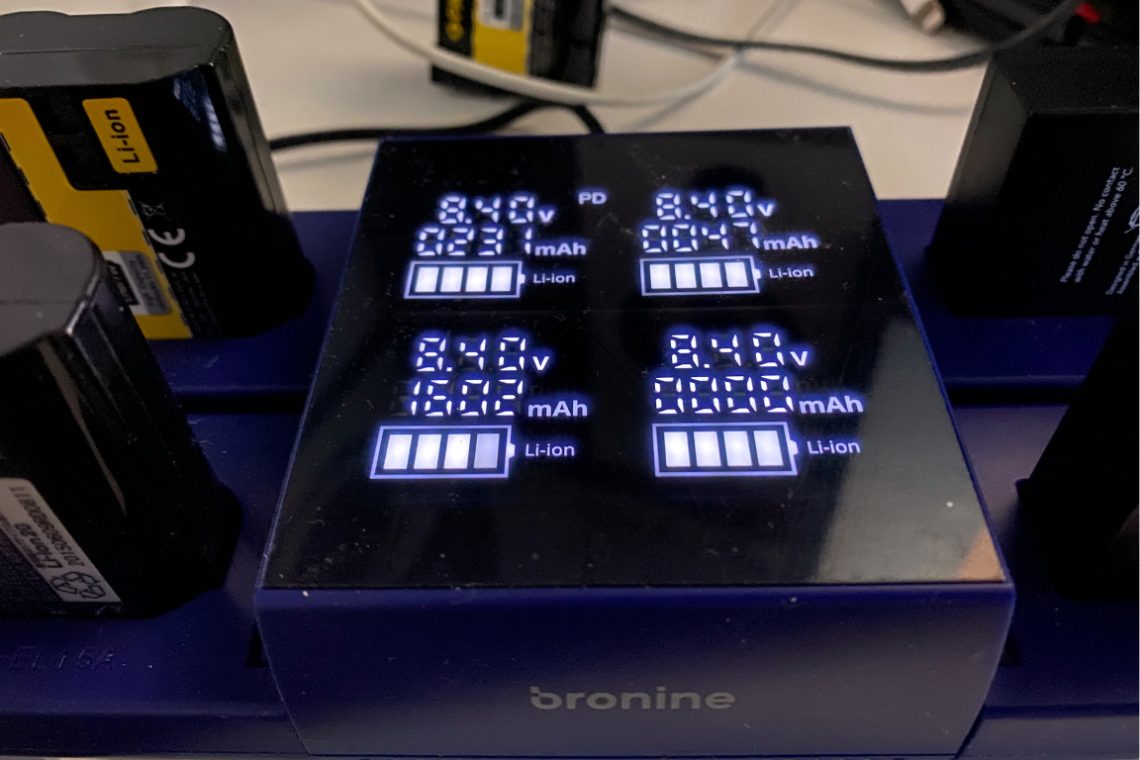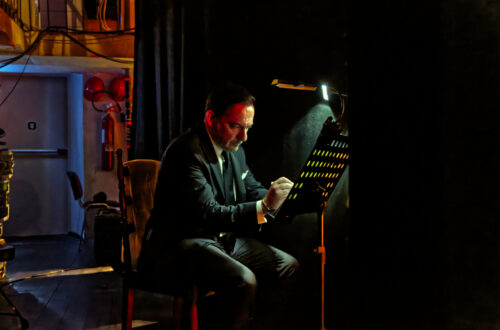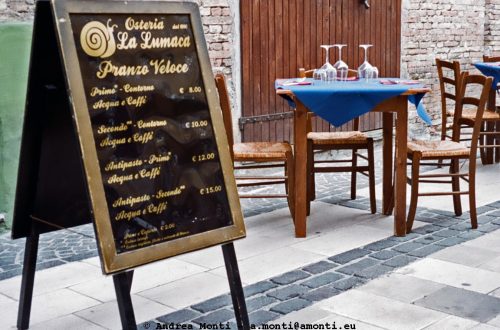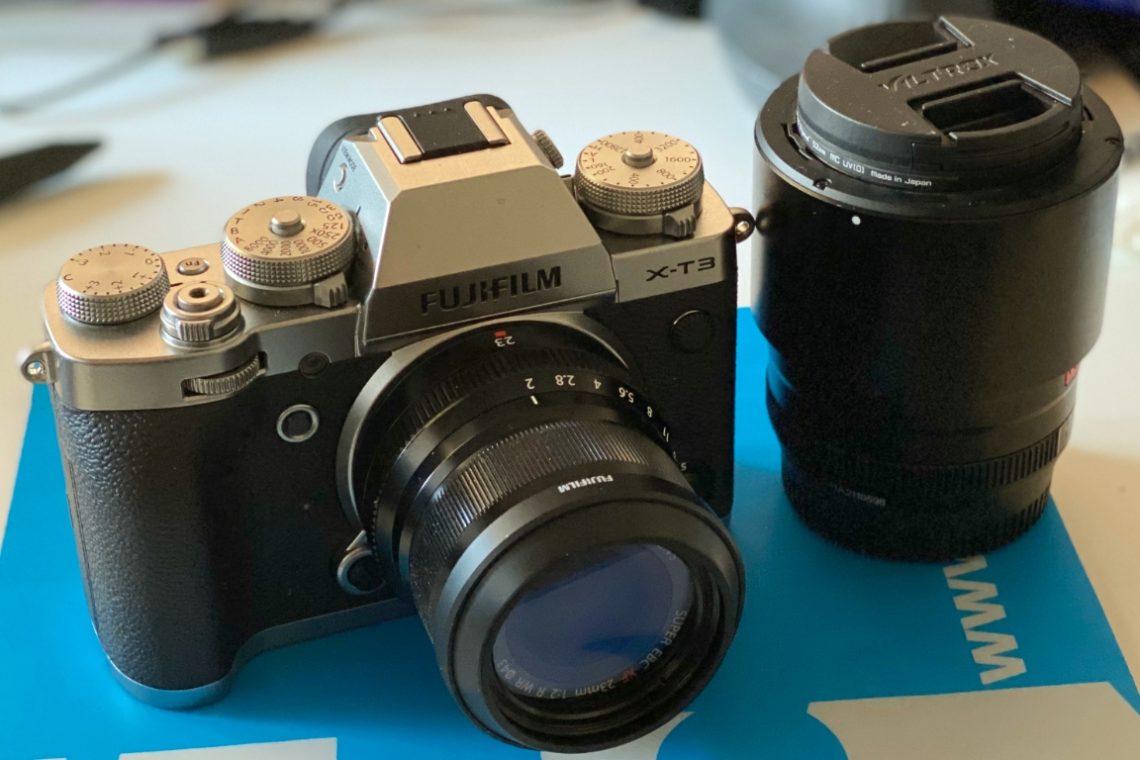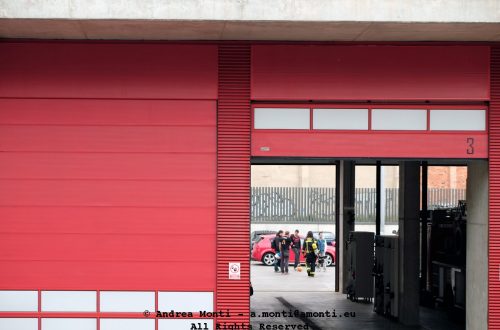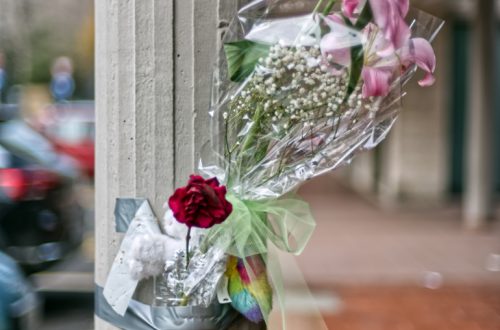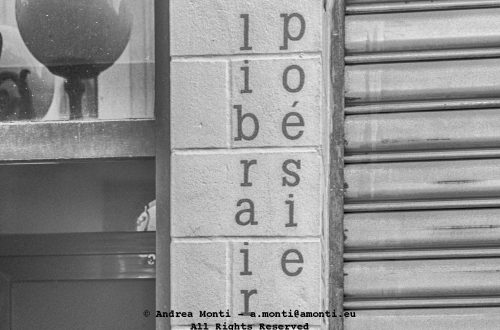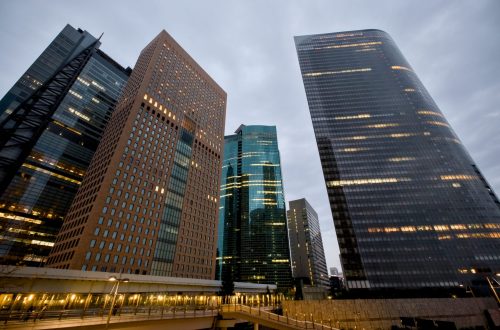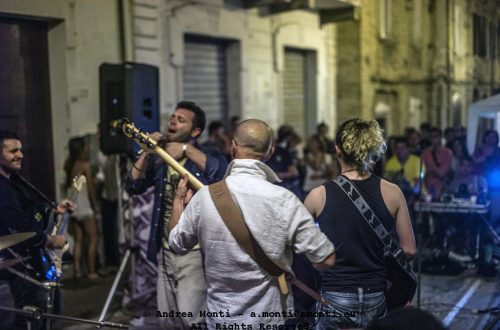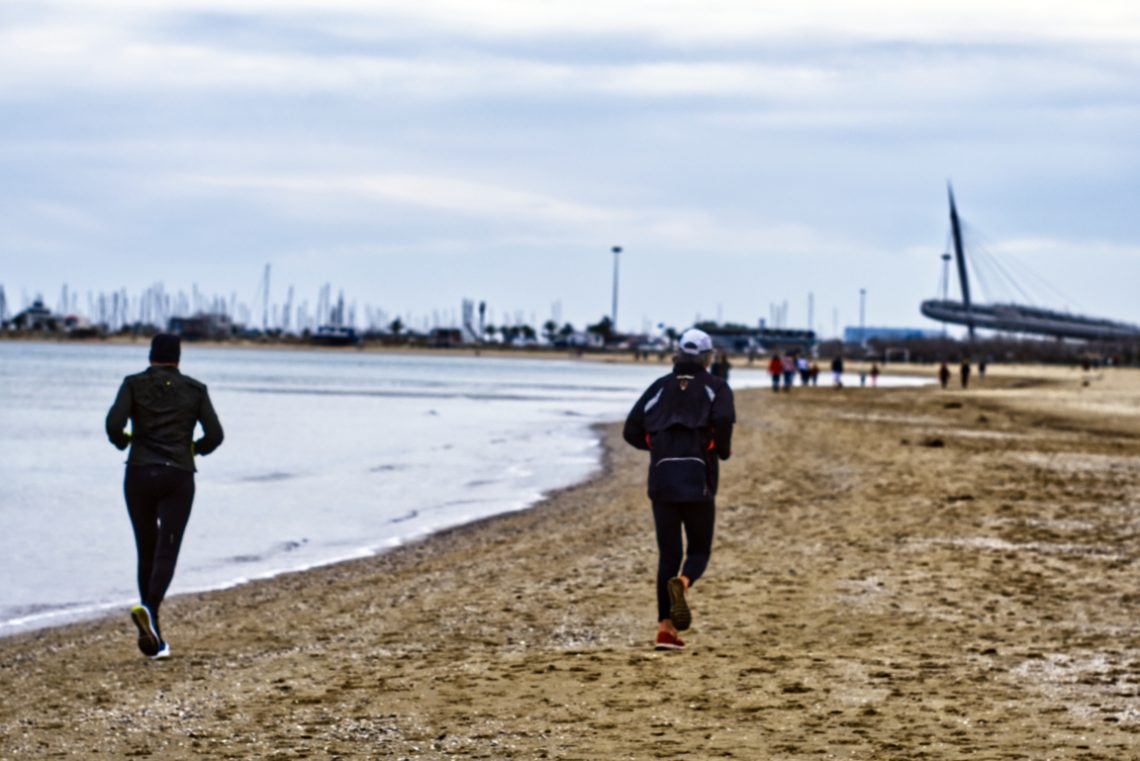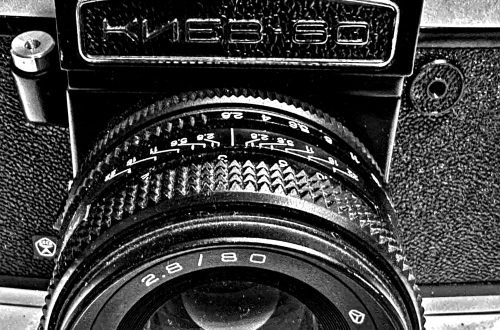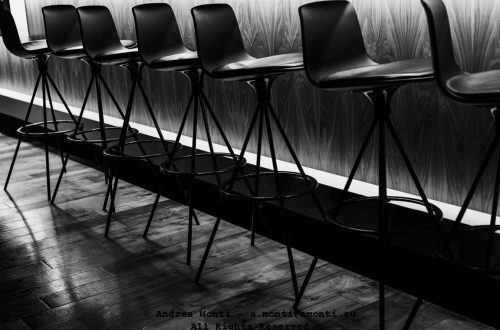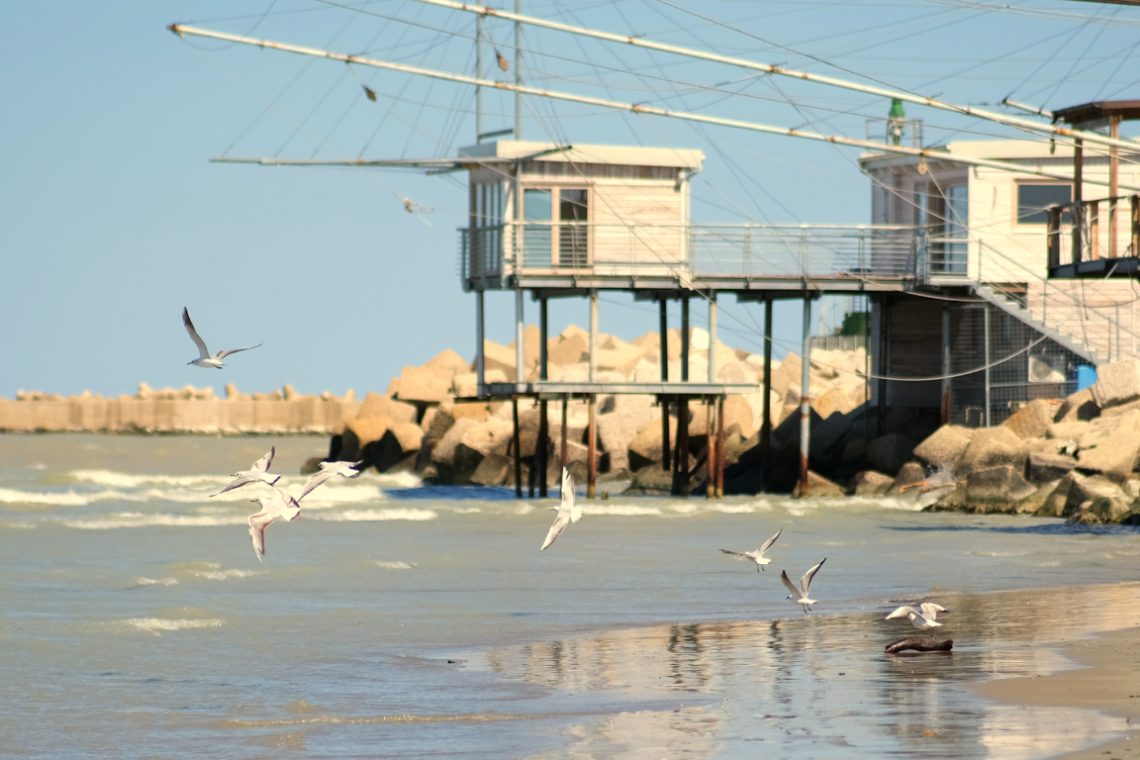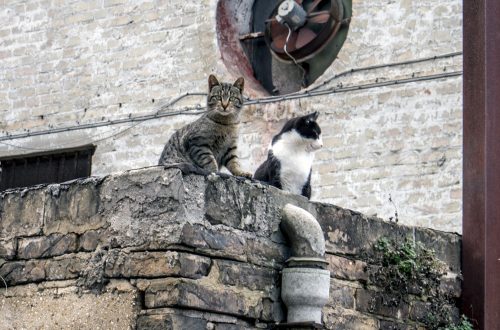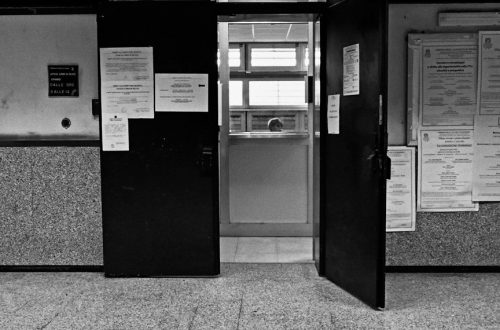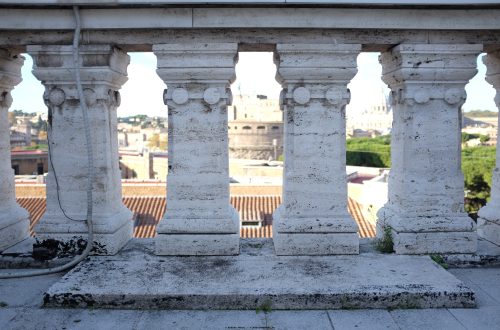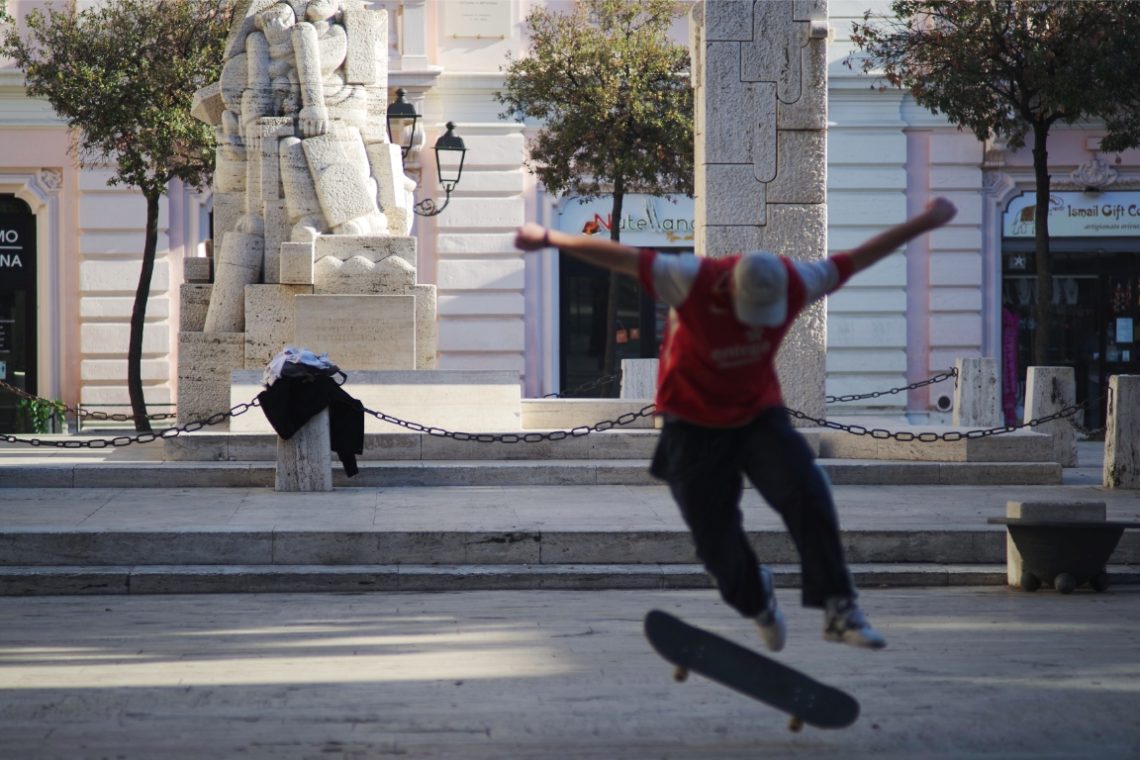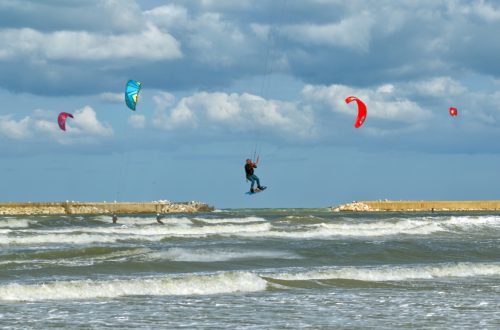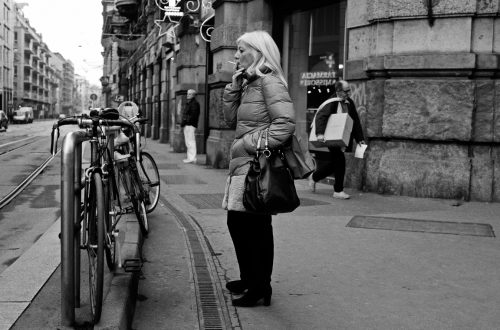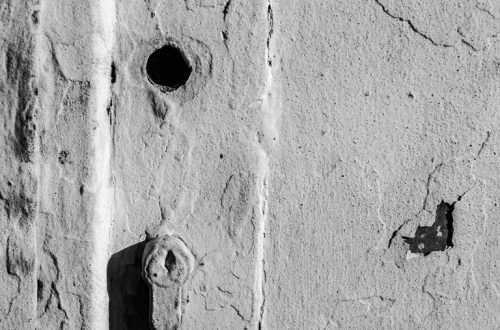-
Moonshot with a handheld Fuji XF150-600 and a Fuji X-T3
The moon doesn’t forgive technical sloppiness. Any softness in focus, hint of motion blur, or weakness in exposure shows up instantly. This crescent was taken handheld with the Fuji XF150-600 on an X-T3 — a combination that, on paper, might not seem ideal for lunar work without a tripod. Yet, that challenge was the point. The compression of 600mm brought the surface’s rugged texture into relief, and the X-T3’s sensor resolved the fine gradations between illuminated craters and the shadowed terminator with satisfying clarity. The key here was managing shutter speed — 1/1000s gave me enough to counteract handshake, but I kept the ISO just high enough to hold detail…
-
A Frame Within a Frame Within a Frame
The irony didn’t hit me until I developed the roll—an expired Ilford XP2 Super 400 that had been lounging at the bottom of a drawer for years. Shot with a Voigtländer Bessa R2 paired with the Nokton 35mm f/1.4, this image is as much a meditation on layers as it is a commentary on isolation. What initially looked like an ordinary street shot—girl on a call, perched on a windowsill—turned out to be a trifecta of enclosures: her physical pose wrapped in posture and winter clothing, set within the architecture of the window, itself encased in the framing of the building. Beyond, the city reflects itself, ghostlike, on the glass—another…
-
Coats
Getting rid of film noise is a recurring necessity when shooting film at (relatively) high ISO.In this photo the negative was digitised using a Pentax K-1 Mark I and a Pentax FA 100/2,8 Macro. Then, before inverting the curves to make a positive, it was fed into DxO PureRaw3 (by the way, it properly recognized the camera and lens). Finally, in Affinity Photo Develop Persona’s Details tab, once the curves were inverted, it was necessary to tweak the Noise Reduction options by setting Luminance to 50% and Luminance Details to 0.
-
Powermeters
This photo was taken with an Ilford XP2 Super 400, a Voigtländer Bessa R2 and a Voigtländer 35mm f/1.4 II lens. The film was digitised using a Pentax K-1 and a Pentax FA 100/2.8 Marco mounted on a custom-built rig. The resulting raw was processed in Affinity Photo. In Develop Persona, first the image was turned in black and white, then the master curve was intverted and finally exposure, contrast and other parameters were tweaked.
-
Editing a photo taken with a Carl Zeiss Jena 135/4 Sonnar and a Fuji X-T3
A vintage Carl Zeiss Jena 135/4 Sonnar whose RF mount has been replaced with a Fuji X mount by Adriano Lolli (https://www.adrianololli.com).Coupled with a Fuji X-T3, it delivers pleasant results. Post production is highly subjective, so the final outcome might no be ‘acceptable’ to some taste. Still, the lens is very good.
-
A sample of the Carl Zeiss Jena 135/F4 Sonnar and a Fuji X-T3
This photo was taken with an old Carl Zeiss Jena 135/4 Sonnar whose Contax RF mount was replaced by a Fuji X mount by Master Adriano Lolli.
-
Unattainable 1:1 magnification with the JJC FDA S-1 and Micro Nikkor 60 2,8
The JJC FDA S-1 does not allow a 1:1 magnification with the Micro Nikkor 60 2,8. It only reaches a smaller factor (about 80%.The probable reason is the excessive lenght of the original step-down ring.Using a thinner step-down ring, as it has been done in this video, does not improve the outcome.
-
Processing a DSLR Digitised Black and White Film with Affinity Photo
This videos shows how to process a Black and White film digitised with a DSLR camera.The process starts from opening the RAW file in Affinity Photo’s Develop Persona. In short and in order, the steps are:
-
DSLR film scanning: episode three
This is, by far, the most pleasing result I have ever had from digitising a film negative with a DSLR.Contrary to many suggestions found on Youtube, I did not invert the negative RAW curve by tweaking the Master RGB option. I did it, instead, channel-bychannel minding each clipping point. This approach allowed for a better reproduction of the grey tones, and in the end a fair result.
-
Another attempt at DLSR film scanning
Still trying.I digitised the negative with a Pentax K-1 and the FA 100 2.8 Macro lens using the JJC clone of Nikon ES-2. Postproduction is done in Pixelmator Pro. I used a Nikon 35TI and a Kodak BW400CN to take the original photo. Strangely enough, the JJC does not allow a 1:1 ratio with the Micro Nikkor 60 2.8.The instructions advise to mount the 62mm to 52mm step-down ring, the #2 52mm barrel-shaped tube and finally the film holder. These instructions are clearly wrong, as it is not possible to get 1:1 magnification with this setup.So I removed the tube and mounted the film carrier directly on the 62mm to…
-
An attempt at DSLR-made film digitization
This is the first usable result of the attempt to DSLR-scan films. I tried several approaches, including the standard tripod holding the camera perpendicularly to a flat, LED-lighted surface. However, I finally went for a different solution: a horizontal rig with two moving plates, a micrometric head holding the film and three-axis and a panoramic head holding the camera.
-
Pixelmator Pro Debanding and Electronic Shutter
Pixelmator Pro Deband feature does not work on banding caused by the well known electronic shutter lag. The Deband feature has not been advertised as working also with ES-induced banding, so the fact that it can not handle it is not a bug. However, this limit seriously reduces the appeal of the new feature. I have flagged the issue to Pixelmator Pro Support: currently, they are out of work, but eventually, they should get back to me with some news. Good news, hopefully.
-
Not AI-made…
The colour rendition of a photo taken with a Pentax (camera and lens) is unique. Taste is personal, and so is this opinion. One thing, however, is sure: the pictorial look of this photography is not made by an ‘AI’.
-
Is AI-generated art actually killing ‘real’ Art?
This picture is how Dall-e 2 interpreted a prompt like Kodak Tri-X 400 black and white sketch in the style of Andy Warhol of a scientist facing a hajime sorayama-like cyborg in a 1940 mad scientist sci-fi lab. Does that mean that —as everybody and his cousin keep repeating— that AI killed Art(ists)? Not very. AI-generated imagery serves to specific purposes and whether is creation or not is utterly irrelevant.
-
The Mystique of Film
I have resisted for a long time before giving out my two cents about the neverending debate ‘film vs digital’. I gave up after the next self-delusion I read in a well-known ‘semi-pro’ (purposely not linked) online photography magazine. It featured the umpteenth column explaining how shooting film ‘gets the experience back’, going full-manual ‘forces you thinking’, having limited exposures ‘pushes you to become more selective’, and all the usual motives connected with the choice of travelling on a horse-powered chariot instead of using a regular car. There is no need to shoot film to experience all that. Set the camera on full manual, disable OIS and IBIS, use a…
-
Bronine Volkit Camera Hub. Mixed feelings
The picture is self-eplaining. Patona batteries show odd parameters, while a Nikon original battery is more in line with the declared specs. This is by no way a reliable experiment, as the batteries’ state is not comparable. I will continue experimenting with different models because these results are pretty odd. However I can not blame Patona for the outcomes, for the bromine volkit itself might be defective and a fair comparison should be based upon batteries handled similarly.
-
Fujifilm X-T3 Video Cheat Sheet
Although the Internet (and Youtube) are full of information about using the Fujifilm X-T3’s video capabilities —kudos to Chris Lee’s Pal2Tech Youtube channel for his incredible work— having a ‘quick ‘n’ dirty’ cheat sheet works better when all you need is information and not entertainment. This cheatsheet is organised according to (my personal) logic rather than to the camera’s menu order. It starts from the outside and goes deep down the intricacies of the various features. It also highlights some techicanilities that, although written in the manual, have not so obvious implications. A final word: this is a work-in-progress. More information will be added as soon as they become available.…
-
A Fountain’s Jet
I took this shot with a Viltrox AF 56/1,4 XF at full aperture. The focus reacted swiftly, and the colours’ rendition is pretty accurate. There is minimal colour fringing. However, it is more likely caused by air bubbles rather than by the lens itself. Like its bigger sibling, the AF 85/1,8 XF, this lens is excellent. Photographing water at f/1.4 is, in many ways, an exercise in precision gambling. The Viltrox AF 56mm f/1.4 XF, mounted on the Fuji X-T3, gave me a razor-thin depth of field to work with. At this aperture, there’s no room for hesitation – you either nail the plane of focus or lose the subject…
-
Using a 1960 Leica Elmarit 90/2,8 on a Fuji X-T3
In short The Leica Elmarit 90/2,8 works flawlessly on a Fujifilm X-T3, also with third-party adapters having no electronic connection with the camera. It provides excellent results, notwithstanding its age. Using this lens for street photography requires using focus-peaking or zone focus. In this latter case, proper training is necessary to correctly assess the distance from the subject. Image quality On the X-T3 the lens preserves its unique identity. Its colour rendering gives pictures a distinctive ‘retro’ character. The Elmarit shows an excellent resolving power: thin lines are visible and well defined. Chromatic aberration is visible at F2,8. It disappears from F4 and ahead. Anyway, the lens profile is well…
-
In praise of ‘cheap’ lenses for ‘pro’ works
Full disclosure: I have no relationship with Viltrox. I purchased the lenses with my own money and did not receive any request to write this post. I have recently discovered Viltrox, a Chinese manufacturer of lenses for the Fujifilm X-system. I am using the AF 85/1,8 II XF and the AF 56/1,4 XF and I am very satisfied by their performance. They are very good for ‘professional’ sessions, however, there are many online reviews that snobbishly rate these lenses as ‘amateur’, ‘non-professional’ or ‘first time portrait photography enthusiasts’ grade. I think that these reviews are unfair and here is why: What does ‘better’ mean? It is a known fact that…
-
Viltrox AF85/1,8 II XF. Reflexless?
I wanted to see how the Viltrox AF85/1,8 II XF handled flare, contrast, and chromatic control in the most demanding conditions: shooting straight into the sun. The result was surprising. No ghosts, no halos, no rainbow arcs. The field stayed clean, with the light falloff natural and evenly graduated. For a lens at this price, that’s more than acceptable — it’s exceptional. This is an Out-of-Camera Jpeg, shot at F8 and ISO 160, unprocessed but for the size. The results are Incredible for a lens that costs so little…
-
A Skater
Framing the whole statue would have made this photo better. The mistake was caused by the necessity to shoot fast, the lens’ field of view and the distance between the subject and the focal plane.
-
A Rudder
Pentax K-1/smc Pentax-A 135/2,8
-
Pentax SMC-A 50/1,7 – Nikkor 50/1,4 – Summicron 50/2
The left slice is taken with a Pentax K-1 and SMC-A 50/1,7, the centre with a Nikon D750 and a Nikkor 50/1,4, the right with a Fujifilm X-T3 and a Summicron 50/2. All the cameras were at their base ISO (100 for the Pentax and Nikon, 160 with the Fujifilm), at F2 and aperture priority. The K-1 and the X-T3 photos were shot in manual focus. Only the K-1 has IBIS stabilization. The jpg is taken in Affinity by slicing each OOC RAW file without post-processing.
